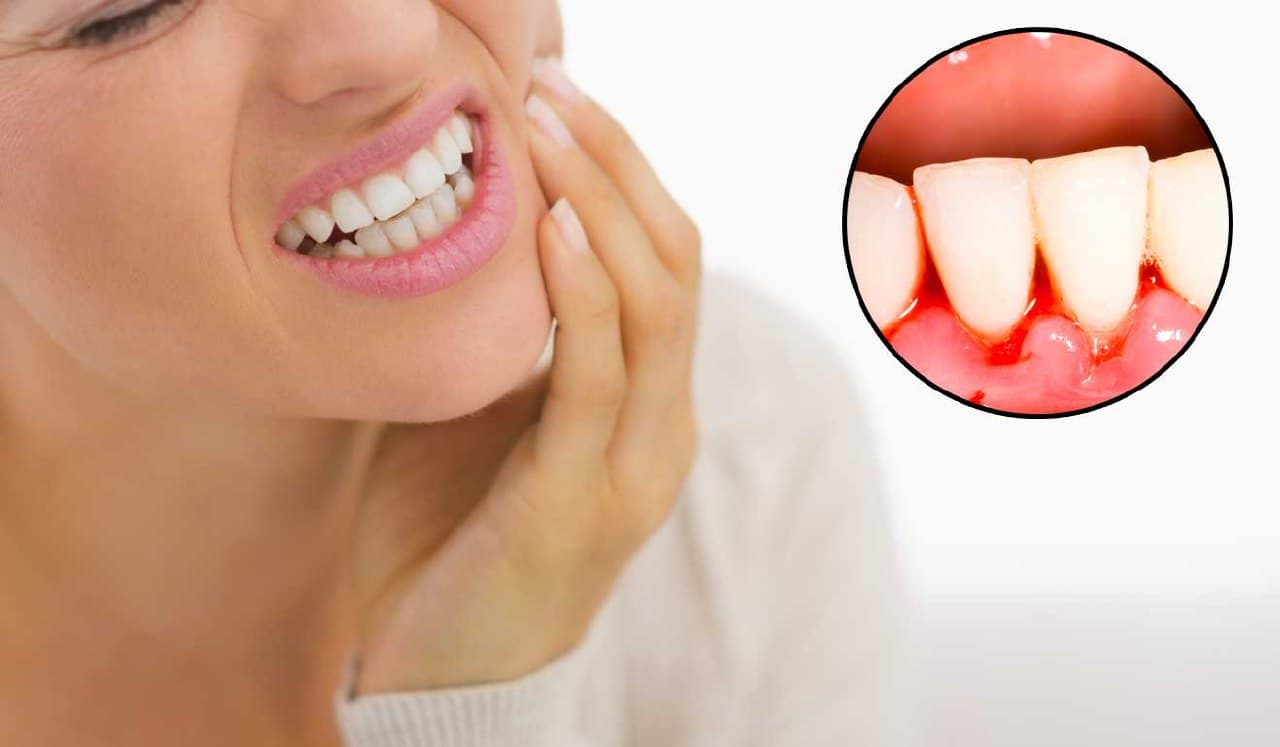Bleeding gums are a common problem that affects every second person. This symptom may indicate various conditions, ranging from inflammation to serious blood system disorders. It is important to visit a dentist in time and not ignore this warning sign.

Causes of Bleeding Gums
1. Inflammatory Periodontal Diseases
The primary cause of bleeding gums is inflammatory diseases such as gingivitis and periodontitis. These conditions often result from poor oral hygiene, allowing bacteria to accumulate on the teeth and form plaque. This leads to gum inflammation and bleeding, especially during brushing or eating.
- Gingivitis is gum inflammation that manifests as redness, swelling, tenderness, and bleeding during brushing.
- Periodontitis is a more severe condition that, in addition to bleeding, can cause tooth loosening and loss if not treated in time.
2. Poor Oral Hygiene
Plaque on the teeth provides an ideal environment for bacterial growth. If you do not brush your teeth properly or neglect additional oral care tools like dental floss and mouthwash, bacteria can cause gum inflammation and bleeding. It is especially crucial to clean not only the tooth surfaces but also the gum line, where bacteria accumulate the most.
3. Bite Problems (Traumatic Occlusion)
An incorrect bite can exert excessive pressure on the gums, contributing to inflammation and bleeding. Consulting an orthodontist is necessary to correct this condition using braces or other orthodontic devices.
4. Trauma from Dentures, Fillings, or Other Dental Work
Poorly fitted dentures, bridges, or fillings can injure the gums, causing bleeding. Additionally, improperly placed orthodontic devices can create further issues with soft tissues in the mouth.
5. Blood Disorders and Vitamin Deficiency
Bleeding gums can sometimes be a symptom of systemic diseases. Conditions such as hemophilia and leukemia, or vitamin deficiencies (especially vitamins C and K), can impair blood clotting, leading to bleeding in the gums and other soft tissues.
6. Hormonal Changes
Hormonal fluctuations during pregnancy, menopause, or the use of hormonal contraceptives can make the gums more sensitive and prone to inflammation, leading to bleeding.
Symptoms of Bleeding Gums
Bleeding may occur not only during brushing but also while eating, especially when consuming hard foods. Main symptoms include:
- Blood on the toothbrush or dental floss after cleaning.
- Redness and swelling of the gums.
- Pain when pressing on the gums.
- Bad breath.

Treatment of Bleeding Gums
Treatment should begin with identifying the underlying cause. After diagnosis, the dentist prescribes individualized treatment.
1. Treatment of Gingivitis and Periodontitis
If bleeding is caused by inflammation, professional dental cleaning at a clinic is necessary. This procedure removes plaque and tartar that cannot be eliminated with home care. Antiseptic agents and, if necessary, antibiotics are prescribed afterward.
2. Improved Oral Hygiene
Brush your teeth twice a day using fluoride toothpaste and a soft-bristled toothbrush. Don’t forget to use dental floss to clean interdental spaces. Antibacterial mouthwashes also help reduce bacterial growth.
3. Orthodontic Treatment
If an improper bite is causing traumatic occlusion, an orthodontist may recommend corrective treatments such as braces or aligners.
4. Correction of Dental Work Issues
If bleeding is caused by poorly fitted dentures or fillings, their replacement or adjustment is necessary to eliminate mechanical irritation of the oral tissues.
5. Vitamin Therapy and Treatment of Blood Disorders
For vitamin deficiencies or blood disorders, a doctor may recommend vitamin supplements or refer you to a physician for further examination.
Prevention of Bleeding Gums
To prevent gum bleeding, follow these simple rules:
- Brush your teeth at least twice a day.
- Use dental floss and mouthwash.
- Use specialized products to strengthen gums.
- Maintain a healthy diet rich in essential vitamins and minerals.
- Visit your dentist regularly for preventive check-ups.
Conclusion
Bleeding gums are not just an unpleasant symptom but also a sign of potential health issues. It is crucial to see a dentist in time for diagnosis and proper treatment. A comprehensive approach, including good oral hygiene, gum disease treatment, bite correction, and preventive care, will help prevent serious dental issues and maintain healthy teeth and gums for years to come.
Authors
Burletova V.
Dentist, therapist, and surgeon at A.I. Budovsky’s Clinic, St. Petersburg (Budovsky)

